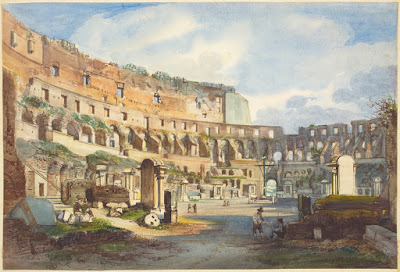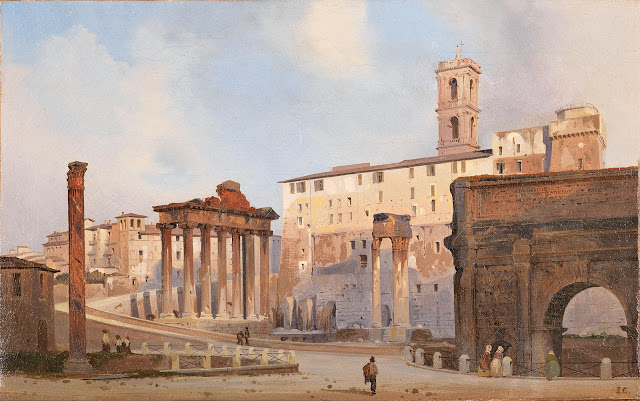 |
| Ippolito Caffi Rome - Colosseum Interior illuminated by Fireworks before 1866 oil on canvas private collection |
 |
| Ippolito Caffi Rome - Colosseum Interior before 1866 watercolor and gouache on paper National Gallery of Art, Washington DC |
 |
| Ippolito Caffi Rome - St Peter's Square in Moonlight before 1866 oil on canvas private collection |
 |
| Ippolito Caffi Rome - St Peter's Basilica and Square with Crowds awaiting a Papal Audience 1845 oil on canvas private collection |
 |
| Ippolito Caffi Rome - View from the Pincio 1866 oil on canvas Pinacoteca Egidio Martini, Ca' Rezzonico, Venice |
 |
| Ippolito Caffi Rome - Forum, with Arch of Constantine before 1866 oil on canvas private collection |
 |
| Ippolito Caffi Rome - Blessing of Pius IX from Palazzo Quirinale 1848 oil on canvas private collection |
 |
| Ippolito Caffi Rome - Arch of Titus and Temple of Venus and Roma before 1866 watercolor and gouache on paper National Gallery of Art, Washington DC |
 |
| Ippolito Caffi Rome - Piazza del Popolo 1847 oil on canvas private collection |
 |
| Ippolito Caffi Rome - Festa dei Moccoletti 1852 oil on canvas private collection |
 |
| Ippolito Caffi Rome - Forum before 1866 oil on canvas private collection |
 |
| Ippolito Caffi Venice - Santa Maria dei Miracole and Santa Maria Nova before 1866 oil on cardboard private collection |
 |
| Ippolito Caffi Venice - Piazzetta by Night before 1866 oil on paper private collection |
 |
| Ippolito Caffi Venice - Night Festival in Via Eugenia before 1866 oil on canvas private collection |
 |
| Ippolito Caffi Venice - Eclipse of the Sun viewed from Fondamente Nove 1842 watercolor and gouache on paper private collection |
"Cavaliere Ippolito Caffi – was a painter of architectural subjects and sea-pieces, born at Belluno in 1814 [actually 1809]. His first work was produced at the Venice Academy. He subsequently removed to Rome, where he worked laboriously as a teacher of drawing, and made some little reputation by his treatise on Perspective, as well as by his investigations on the subject of Roman Monuments. In 1843 he visited Greece and the East. . . . Taking part in the revolutionary movement at Venice in 1848, he had to retire to Piedmont. His intention of producing a painting commemorative of the first Italian naval engagement was frustrated by the destruction of the Re d'Italia, the vessel on board of which he was, when he perished at Lissa along with his comrades in 1866."
– Michael Bryan, Dictionary of Painters and Engravers, Biographical and Critical (London: George Bell and Sons, 1886)